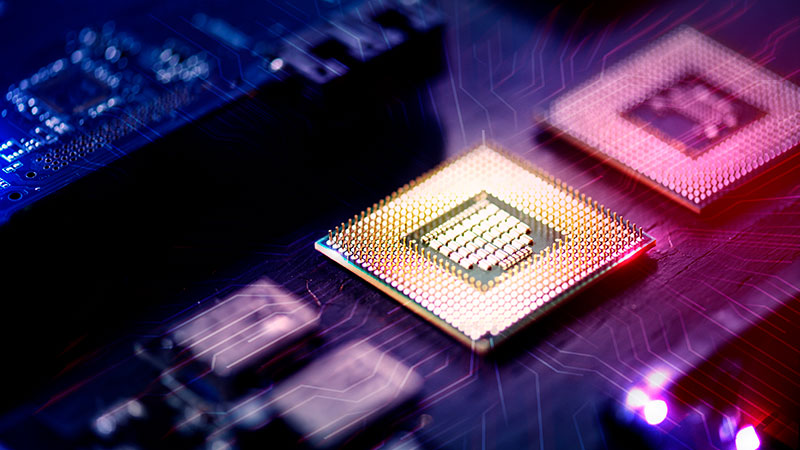The global semiconductor industry reached a historic milestone in 2024, with total sales hitting $627.6 billion, marking a 19.1% year-over-year (YoY) increase, according to the Semiconductor Industry Association (SIA). This surge, primarily driven by explosive demand for AI processors and memory chips, significantly outpaced initial growth projections of 13% and contrasts sharply with the 8.2% decline in 2023.
Record-Breaking Growth Fueled by AI and Data Centers
● Q4 2024 revenue totaled $170.9 billion, up 17.1% YoY and 3.0% quarter-over-quarter (QoQ).
● December 2024 sales reached $57.0 billion, down 1.2% from November.
● Logic chips remained the top-selling category, generating $212.6 billion in revenue.
● Memory sales skyrocketed 78.9% YoY to $165.1 billion, with DRAM sales surging 82.6%, the fastest-growing segment in 2024.
SIA President and CEO John Neuffer stated, “2024 was the highest-grossing year ever for the semiconductor market, surpassing $600 billion in annual sales for the first time. With double-digit growth projected for 2025, the long-term industry outlook remains incredibly strong.”
Regional Sales Trends
● Americas led growth with a 44.8% increase.
● China's semiconductor market grew 18.3%, driven by AI and cloud computing expansion.
● Asia Pacific (excluding China) saw a 12.5% increase, while Japan and Europe faced declines of 0.4% and 8.1%, respectively.
● December month-over-month sales showed growth in the Americas (+3.2%), but declines in China (-3.8%), Asia Pacific (-1.4%), Japan (-4.7%), and Europe (-6.4%).
AI Boom Reshaping the Semiconductor Industry
The semiconductor market is undergoing unprecedented transformation due to rising demand for AI hardware. The surge in AI-driven chips has propelled companies like Nvidia to a $3.15 trillion valuation, making it one of the world's most valuable companies.
SIA's Director of Market Research Greg LaRocca projects 11.2% semiconductor revenue growth in 2025, reinforcing the sector's critical role in the global economy and technological advancements.
“AI demand has created dramatic market fluctuations unlike anything we've seen before,” Neuffer said. “The semiconductor industry is growing at an extraordinary pace across all categories.”
U.S. Chip Industry Poised for Expansion Amid Trade Uncertainty
With semiconductor sales surging, U.S. chip production capacity is expected to triple by 2032, aiming to strengthen supply chains and reduce reliance on foreign manufacturing. However, ongoing trade tensions and tariff threats cast uncertainty over future growth.

Former President Donald Trump has pledged to impose tariffs on semiconductors not only from China but also from Taiwan, a move that could significantly impact the U.S. tech sector. Meanwhile, the Consumer Technology Association estimates that tariffs could increase:
● Game console prices by 40%
● Smartphone prices by 26%
● Laptop prices by 46%
Nvidia CEO Jensen Huang recently met with Trump at the White House to emphasize the semiconductor industry's strategic importance and America's leadership in AI.
CHIPS Act and U.S. Manufacturing Incentives
The U.S. CHIPS and Science Act, which allocated $52 billion to boost domestic semiconductor manufacturing, remains a crucial factor in shaping the industry's future. Intel has already secured $2 billion from the fund to expand its U.S. production.
However, policy uncertainty raises concerns about long-term investments. Duncan Stewart, semiconductor lead at Deloitte, predicts that even with new fabs coming online, U.S. chip production will grow by just 14% by 2032, a slow pace given the scale of investment required.
“Building semiconductor fabs is a massive undertaking,” Stewart explained. “A 10–14% increase in U.S. chip production is actually a strong number, but it highlights the challenges of scaling manufacturing in this industry.”
Looking Ahead: Semiconductor Market Faces Both Opportunities and Risks
Despite strong growth, the semiconductor industry remains highly volatile, particularly in memory chips, which are prone to cyclical supply-demand imbalances.
LaRocca noted that AI chips aren't yet classified separately, but the logic chip segment—where AI processors reside—grew by 81% in 2024.
“We've never seen growth rates like this before,” Neuffer emphasized. “This is full-scale acceleration across the board.”
However, Neuffer warned that trade disputes and policy shifts pose risks to global supply chains, urging policymakers to support continued semiconductor innovation and production incentives to maintain America's leadership in the field.
The semiconductor industry's record-breaking growth in 2024 signals an AI-driven revolution, but its long-term trajectory will depend on economic policies, supply chain resilience, and continued investment in next-generation chip technologies.
+86 191 9627 2716
+86 181 7379 0595
8:30 a.m. to 5:30 p.m., Monday to Friday
